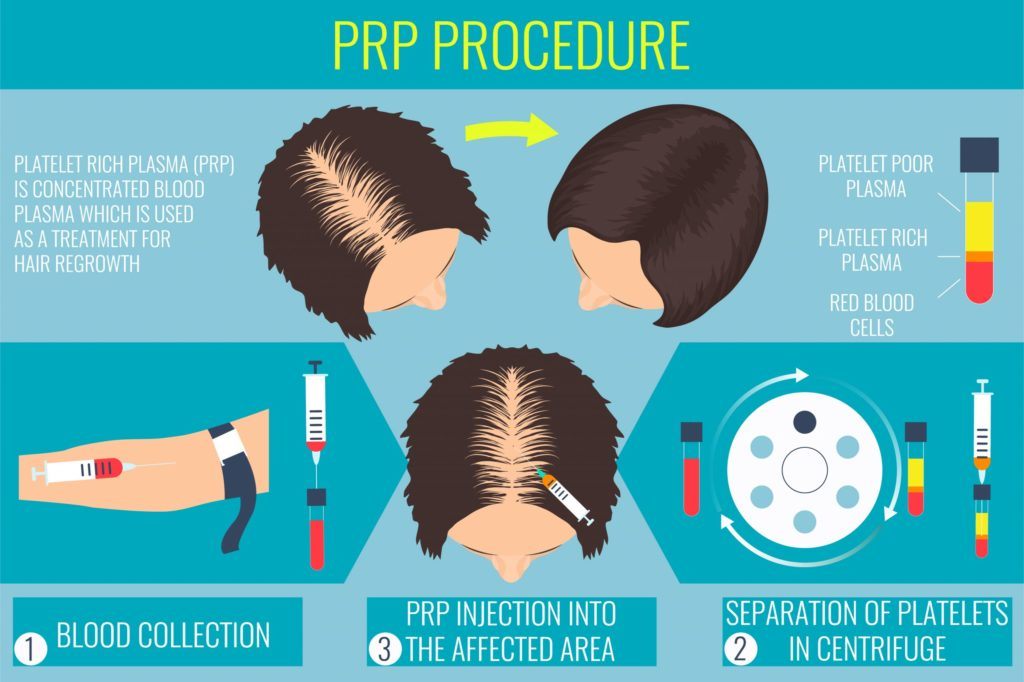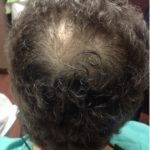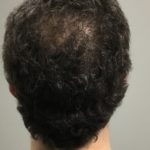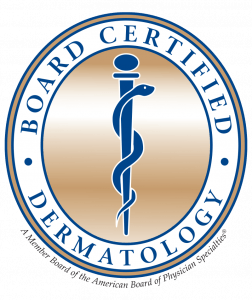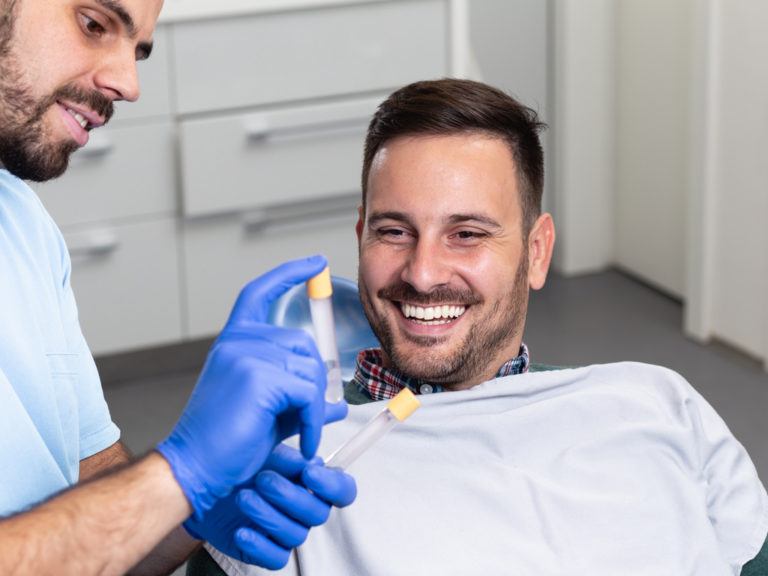
What is PRP?
PRP is an acronym for Platelet Rich Plasma. Platelets are a normal component of healthy blood that function in the body’s clotting mechanism. Plasma is the fluid that surrounds and protects these blood cells. When a person’s own blood is collected and centrifuged, the plasma containing portion of platelets (i.e. PRP) are rich in growth factors. It is these key growth factors that stimulate cell growth and new blood supply to the hair follicle. By providing a fresh source of nutrients to the balding scalp, PRP can supercharge the shrinking hair follicles leading to increased caliber, longer growth phase, and improved hair density.
PRP Treatment Diagram
Procedure Diagram
Procedure Video
Frequently Asked Questions (FAQ)
- After arrival to the office, we will bring you to the treatment room where the PRP procedure will take place.
- We ask that you sign an informed consent. Dr. Singer will provide a complete explanation of the risks and benefits. All questions will be answered at that time.
- Using a small butterfly needle, our medical team will draw 30 ML of blood from a vein in your arm.
- The blood is centrifuged and the PRP is extracted and prepared. During this step, there will be a 20 to 30 minute downtime for the patient.
- Using multiple punctures, Dr. Singer will inject the PRP fluid into the scalp using a 27 gauge needle.
- Postoperative instructions are provided.
TOTAL TIME: 60 minutes
PRP involves multiple injections using a small needle, and therefore there is some discomfort. The injections are spaced apart by a full inch and injected into the subcutaneous space leading to less pain than the original protocol.
We use ice and a vibratory device to minimize discomfort. No sedation is needed. Most people tolerate the procedure very well.
Your scalp will feel somewhat “full” as there is fluid sitting within your scalp. This sensation will decrease throughout the day.
In addition, you may experience some mild soreness for the next 24 to 48 hours in the previous areas of injection. The soreness will not interfere with your normal daily activities.
All symptoms generally resolve within 72 hours.
There are some conflicting data as to the success of PRP. Some studies show substantial benefit while others show less impressive response. The studies differ in the design and protocol used. In reviewing all studies, a “meta-analysis” discards studies that are poorly performed or lack certain criteria. It only includes well designed and reliable data in its analysis.
The largest meta-analysis (a group of studies pooled to determine a treatment outcome) published in 2018 examined PRP in 194 men and women with male and female pattern balding. The results were as follows: A significant increase in hair density was observed after PRP injections, and an increase in hair thickness cross-section favored the PRP group (versus those without PRP).
It is important to note that not all people with balding respond to PRP and some people respond better than others. The best current estimates are that 3 out of 4 people obtain positive results with approximately 25% to 50% improvement in density. Unfortunately, there is no way to predict ahead of time who will respond to PRP treatments.
Approximately 13-15 ML of PRP fluid (with 4 to 5 times concentrate of PRP) is extracted from the 30 mL blood draw.
We use the Crown Aesthetics ProGen PRP Advantage System, an FDA Cleared, Class II 510k device. The 30 ml collection tube yields larger volumes of growth factors.
PRP has been most heavily studied in male and female pattern hair loss, the most common forms of balding.
Newer studies are showing that PRP is a safe and promising therapeutic option in alopecia areata.
Use of PRP for telogen effluvium has little published data though many hair loss experts around the country are using PRP for this condition with good results.
Use of PRP for traction alopecia also has little published data, though Dr. Singer has successfully treated a couple patients with this condition.
People with hair thinning, in the following scenarios, meet criteria for PRP:
- Those who do not wish to start minoxidil (Rogaine) or hormone blocking medications (e.g. Propecia ™ or Spironolactone).
- Those who started minoxidil (Rogaine) or hormone blocking medications but stopped due to side effects.
- Those with hair thinning who had an improvement in their hair density with minoxidil (Rogaine) or hormone blocking medications and wish to try to achieve even further improvement ( This is the category that Dr. Craig Singer was in prior to receiving PRP).
- Those undergoing hair transplantation.
- Those with alopecia areata, traction alopecia or chronic telogen effluvium who did not respond to standard treatments.
There are a few steps you will want to take before your session in order to maximize the results. Please email us at TopDoc@Singerderm.com for Pre-Procedure instructions.
Since PRP is harnessed from the person’s own blood, the risk of serious reactions are minimal.
Potential side effects include:
- Pain from injections
- Temporary swelling of the scalp
- Soreness of the scalp lasting several days
- Temporary shedding ( very rare)
- Minor bruising
- Nerve injury during blood draw ( quite rare)
- Unsatisfactory results
PRP is not covered by insurance and is considered an elective procedure.
We charge $550 per individual session. However, a package of 4 treatments is $2000. - This provides a $50 discount per each treatment.
These are the actual results of Dr. Craig Singer.
Dr. Singer developed male pattern hair loss starting at 28 years of age. He started Propecia (i.e. finasteride) 1 mg per day. This seemed to prevent the development of progressive hair loss over the next 10 years. However, by the time he turned 40, he noticed progressive thinning along the vertex of his scalp. He then added Rogaine foam twice daily which produced some improvement. But he desired further hair growth in that area. That’s when he started PRP in 2019. The results shown are after four treatments.
Sources
- Gupta AK et al. Meta-analysis of efficacy of platelet-rich plasma therapy for androgenetic alopecia. J Dermatolog Treat. 2017 Feb;28(1):55-58.
- Giordano S, et al. A Meta-analysis On Evidence Of Platelet-rich Plasma for Androgenetic Alopecia. Int J Trichology. 2018 Jan-Feb;10(1):1-10. doi: 10.4103
- Albalat W, Ebrahim HM. Evaluation of platelet rich plasma versus intralesional steroid and treatment of alopecia areata. J Cosmet Dermatol. 2019 May 10.

